Reinstalled Veeam How to Continue Incremental Backups
If you need peace of mind that your virtual machines (VMs) are backed up and safe in case of a disaster, and it's time to look at Veeam Backup & Replication. Veeam's VM backup product is handy for backup and recovery of both Windows and Linux VMs securely.
In this tutorial, you'll learn how to get started with Veeam Backup & Replication by walking through the initial setup and backing up and restoring a VM.
Let's get started!
Prerequisites
Ready to take advantage of everything that VMware has to offer, be sure to check out VMware vSphere and take your virtualization to the next level!
This article will contain hands-on demonstrations. To follow along, be sure you have the following:
- A Windows 10 computer. This tutorial uses Windows 10 20H2.
- A VMware vSphere hypervisor with at least one VM to back up. Veeam will also backup Hyper-V VMs, but this tutorial will focus on VMware.
- A vSphere user account with appropriate permissions on the instance to back up.
- The Veeam Backup & Replication ISO on your PC – This tutorial will be using v11.0 (Community Edition).
Installing and Setting up Veeam
Let's first install Veeam Backup & Replication on your PC. Without further ado, let's get to installing!
1. Mount the Veeam ISO on your local computer and run the setup.exe file.
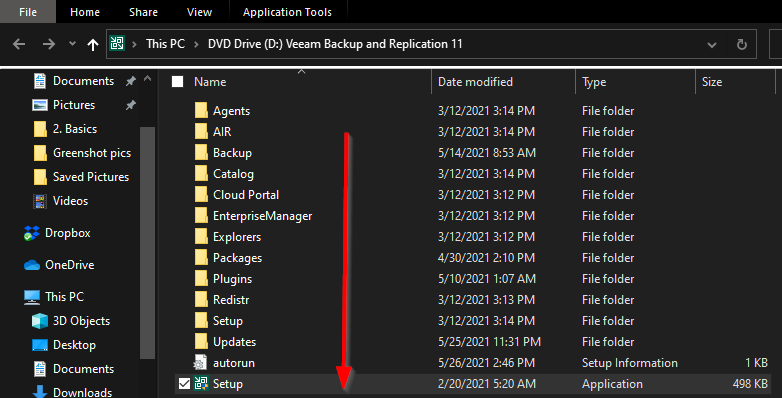
2. Click on Install to install Veeam, then install all standalone components shown below.
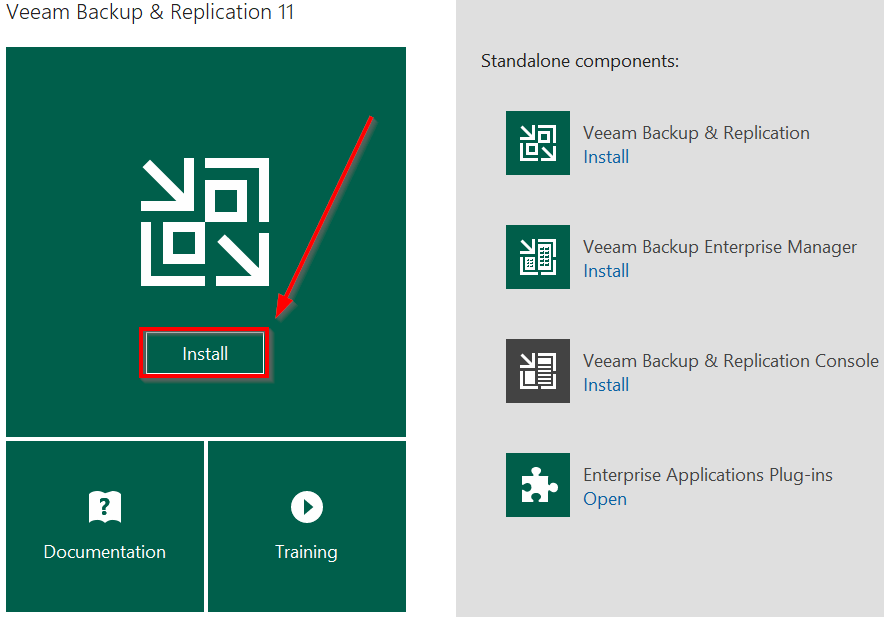
3. Click Next to skip providing a license since you're using the Community Edition in this tutorial.
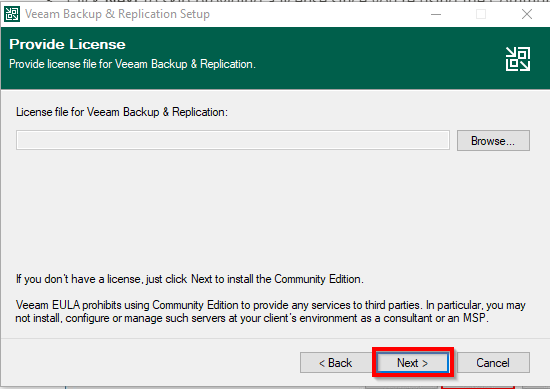
4. A shown below, leave the default install location for Veeam and click on Next. If you prefer to install Veeam on a different location, click on the Browse button to choose an install location.
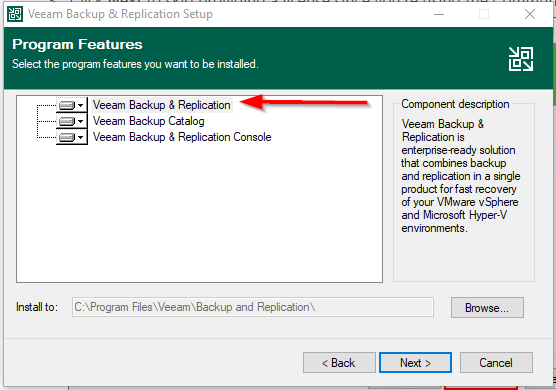
5. Click on Install to install requisites if some are missing, as shown below. Once each requisite is installed, click Next.
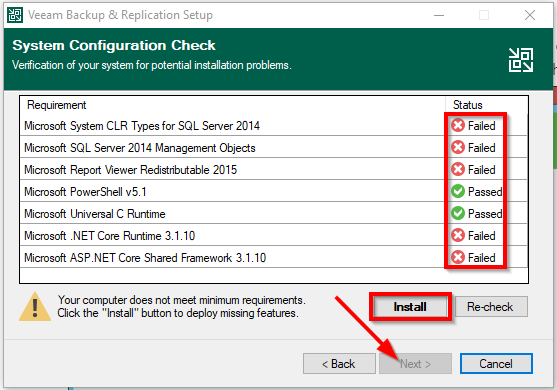
6. View the summary of the installation settings and click Install. You can also make further changes by clicking next after checking the Let me specify different settings box. But let's stick with the defaults for this tutorial.

Creating a Backup Job
Now that you've installed Veeam Backup & Replication, let's go through the steps on creating a backup job. Veeam lets you replicate a fully hydrated and fully functioning copy of a source virtual machine (VM) at a remote location as a backup.
This tutorial will back up a VM called Tiny Veeam as an example and use most of the default settings.
During Veeam's installation, the installation wizard identifies the volume with the greatest amount of free disk space. It then creates the backup folder as the default backup repository to store backup files. The location will be specified by Veeam when configuring Veeam Backup and Replication.
1. Open Veeam Backup & Replication on your desktop.
2. Click on the Home tab at the left panel, then select Jobs, as shown below to view the list of backed-up jobs.
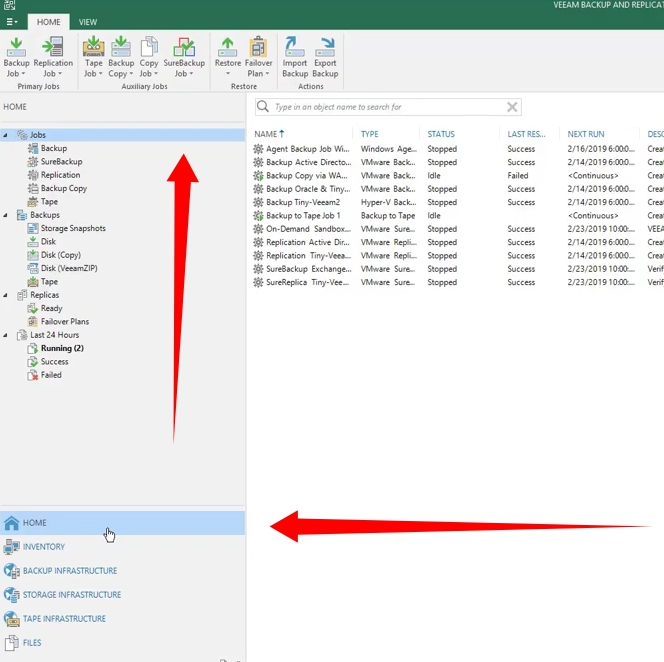
3. Next, click on Backup Job from the toolbar —> Virtual machine —> VMware vSphere. The New Backup Job configuration window will pop up in the next step where you'll create a backup job for a virtual machine.
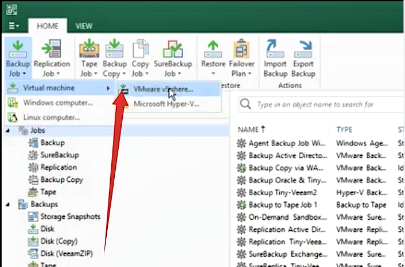
4. In the New Backup Job window, enter your preferred backup job name and description under the Name tab, then click Next to pick a virtual machine to backup.

5. Pick a virtual machine to backup from the list below. Since you're backing up Tiny Veeam for this instance, select Tiny Veeam under Production and click Add.
Once you're back to the New Backup Job window, click Next for storage configuration.
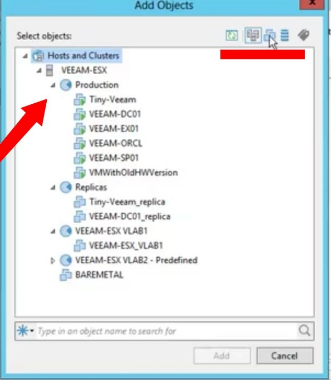
6. Leave the default settings as Veeam will configure the best fitting settings when you create the backup job. Click on the Advanced button to navigate to advanced job settings.
Select the Incremental (recommended) option under Backup mode. Doing so will save increments in new files based on the previously saved archive.
Enable the Create synthetic full backups periodically option to create a synthetic full backup periodically, then click OK to apply the changes. A synthetic full backup combines the data from the latest full backup with subsequent incremental backups instead of backing up data from a client computer.
Once you're back to the New Backup Job window, click Next to configure Guest Processing.
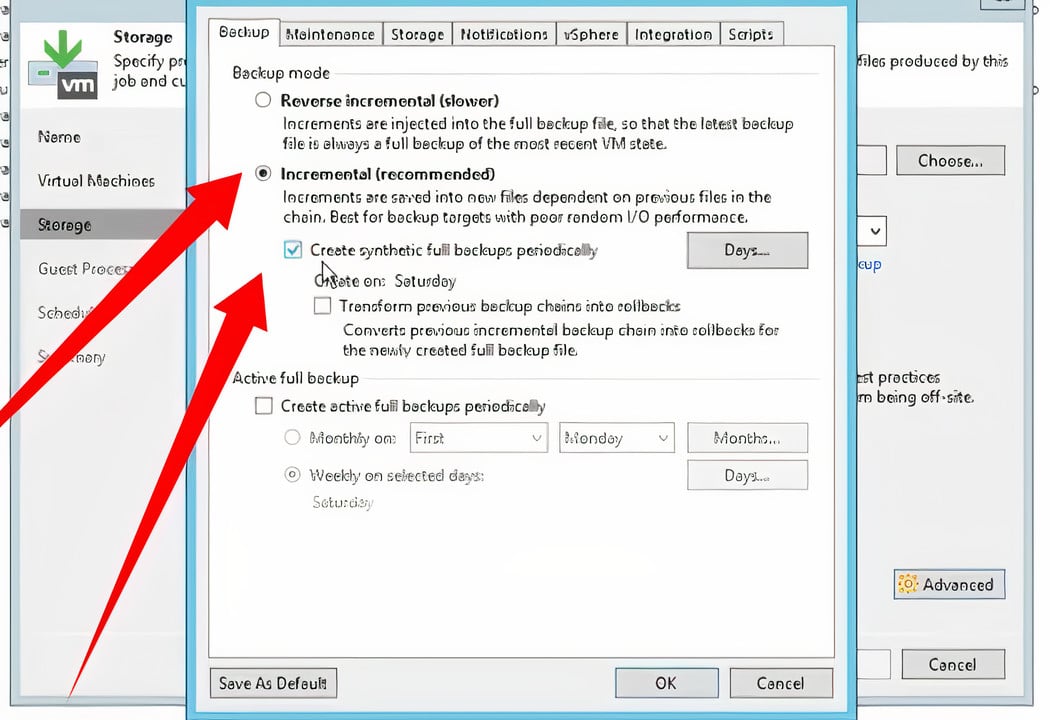
7. Under the Guest Processing section, enable the Application-Aware Processing feature by checking the Enable application-aware processing option. Application-aware processing is Veeam's technology responsible for quiescing applications on the VM. Quiescing applications create a consistent view of application data on the VM guest OS.
Now check the Enable guest file system indexing option to enable the Guest Processing options, then click Next to configure the backup schedule. Guest Processing options are advanced tasks that require Veeam Backup and Replication to communicate with the VM guest OS.
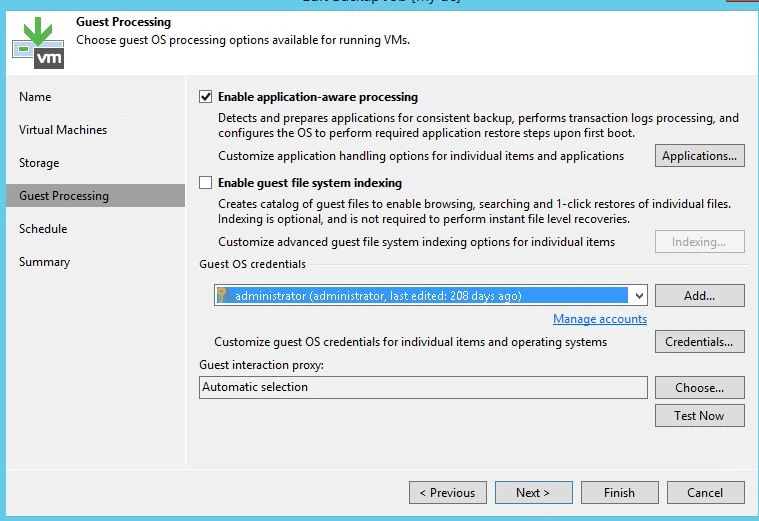
8. Set the backup job to run automatically with the following:
- Enable the Run the job automatically option.
- Make necessary adjustments as to how frequently Veeam must run the backup job. The frequency could be daily, monthly, periodically, or after running another backup job.
- Click Apply to implement the changes.
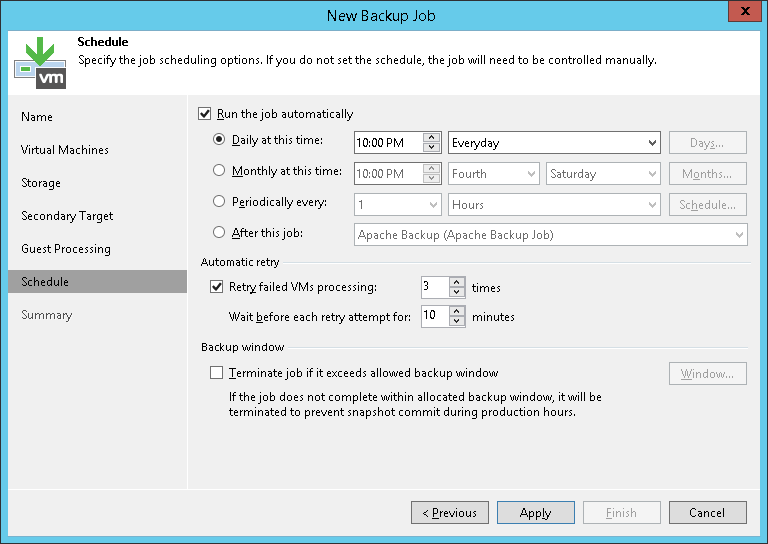
9. Finally, review the configuration summary. Check the Run this job when I click Finish option to run the backup job, as soon as you click on Finish.
If you need more assistance on which settings to choose when creating a backup job, Veeam offers a technical support, or visit the Veeam R&D Forums
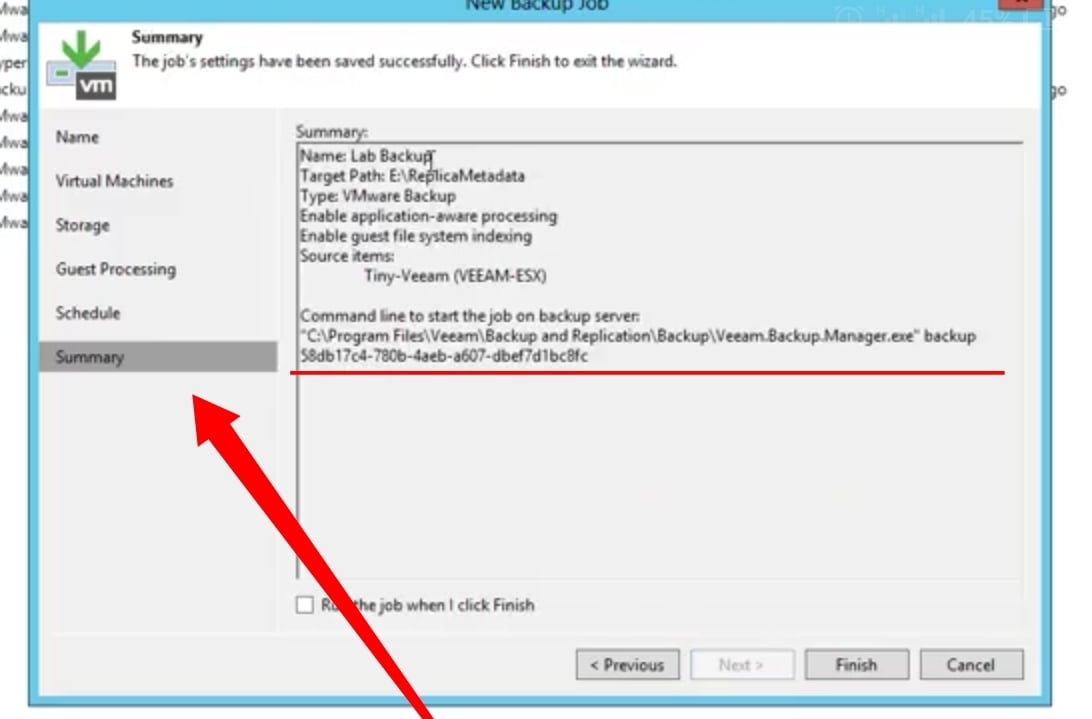
10. In Veeam's main window, click on the Running item under the Last 24 Hours section located in the left panel to confirm the backup job is running.
You can see below, the Lab Backup item inside the list table is in progress, currently at 0% completion.
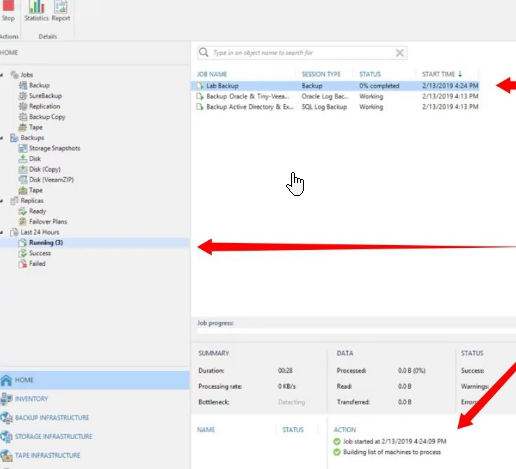
Restoring Backed Up Job
After you've completed creating a backup job, you may be wondering how to restore from the backed-up job you created. Veeam doesn't require staging and offers flexible recovery letting you restore from Veeam, HyperVeeam, and other Guest OS like Windows and Linux.
With a Virtual Private Network (VPN), Wide Area Network (WAN), or Multiprotocol Label Switching (MPLS) connection, you can restore data from the VM copy at any point in time of the backed-up job.
Let's go over how the restoration is done.
1. Navigate to Veeam's Home tab, then click on Restore in the ribbon toolbar —> VMware vSphere, as you see below to see the available restore options.
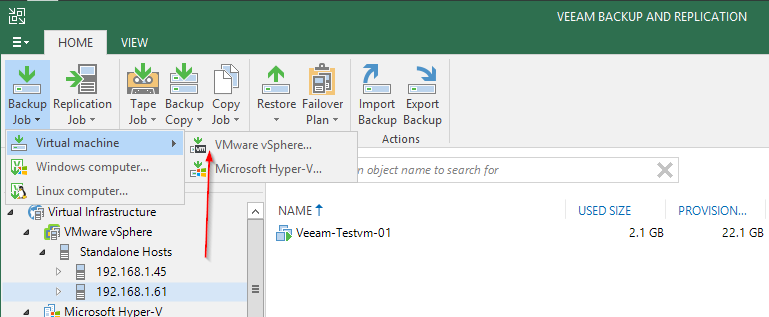
2. Select Restore from backup when the Restore window pops up to recover the file you want to restore from your backup repository.
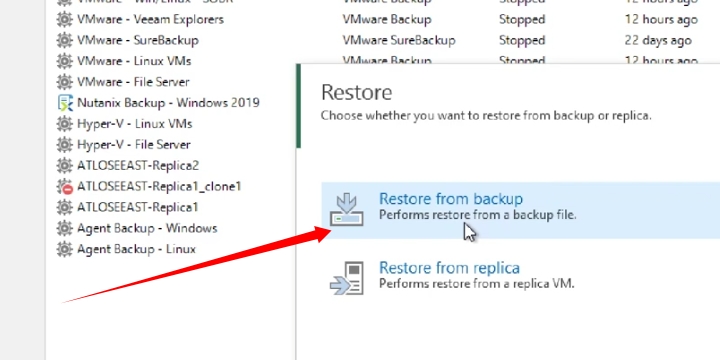
3. Click on the Guest file restore option to start a file-level restore.
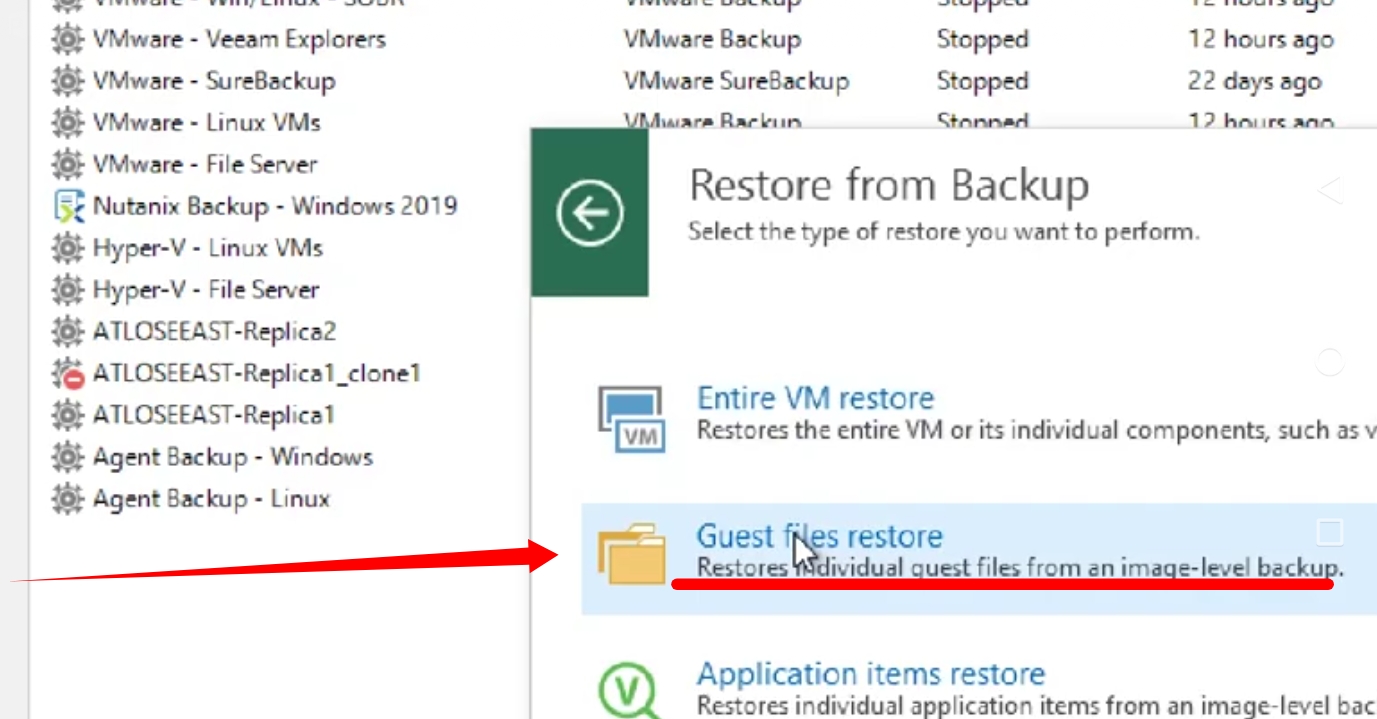
4. Now choose either of the options below where to restore a file from, considering your available machine. But for this example, choose Microsoft Windows.

5. Choose the restore point you want to restore from the table list under the Restore Point section in the File Level Restore window. Click Next to add a reason for restoring the backed-up job you selected.
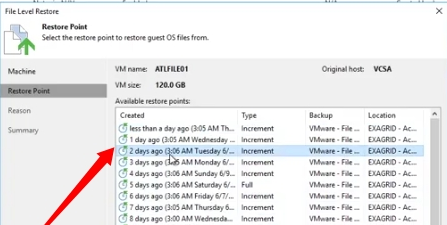
6. Define the reason for the restoration process (optional). If you prefer not to go through this page again, check on the Do not show me this page again option at the bottom.
Click Next to view a summary of the file-level restore settings.
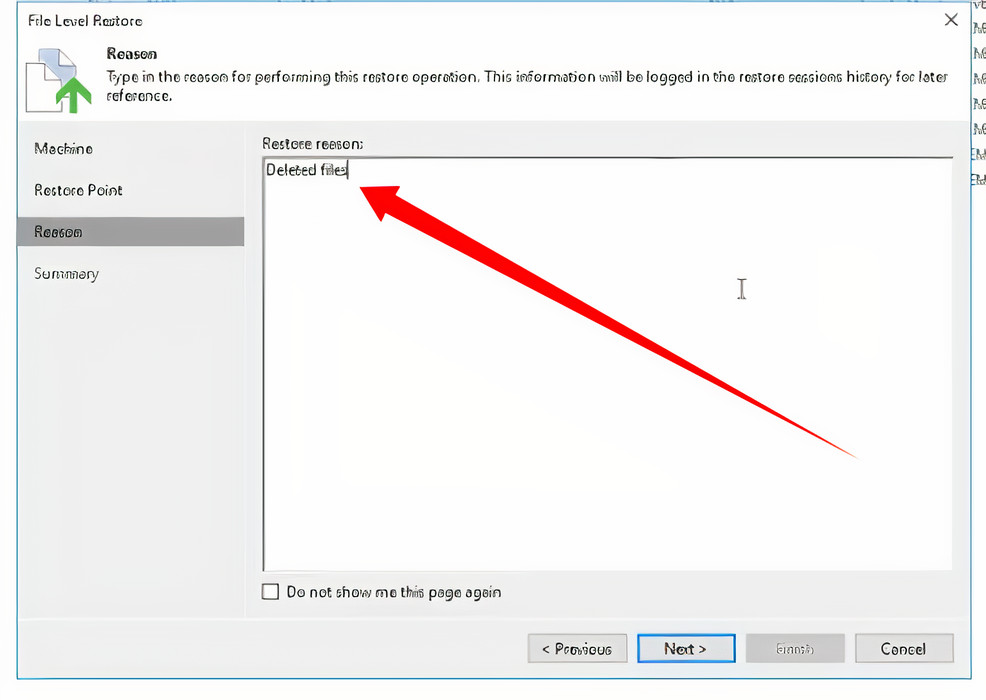
7. Review the summary of the restoration settings, as shown below. Click on Finish to initiate the restoration process.
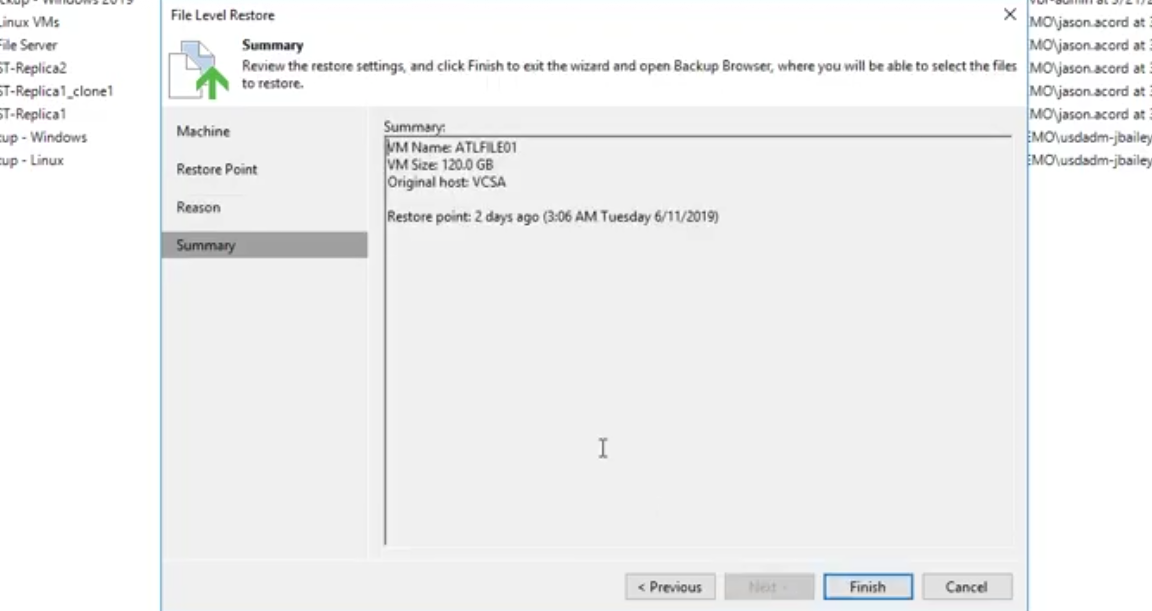
8. In Veeam's main window, click on the Running item under the Last 24 Hours section in the left panel to see the VM instance restoration in progress.
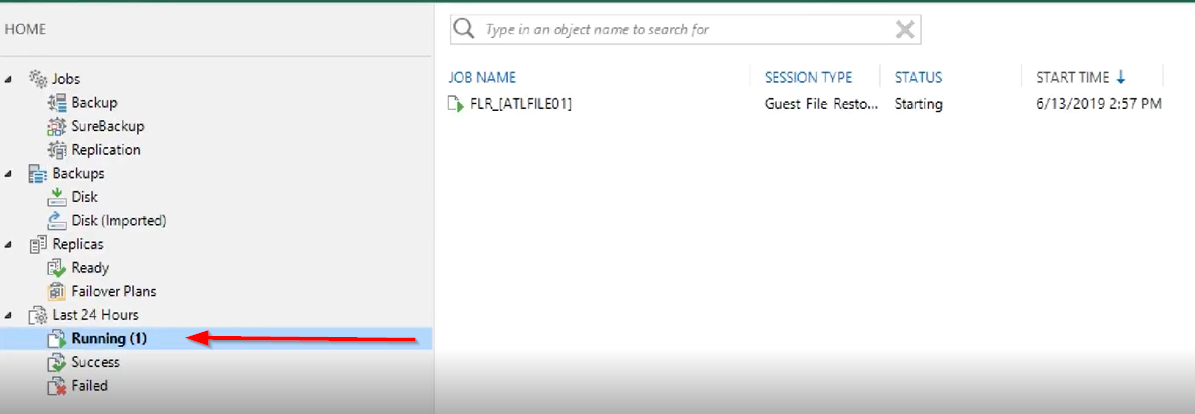
9. To save the specific file you want to retrieve, open the virtual machine you selected in the restore point table (step five).
Now right-click on the file to restore (en-US) and choose Restore from the context menu, as shown below. Choose to either Overwrite the existing file or Keep and restore the file simultaneously.
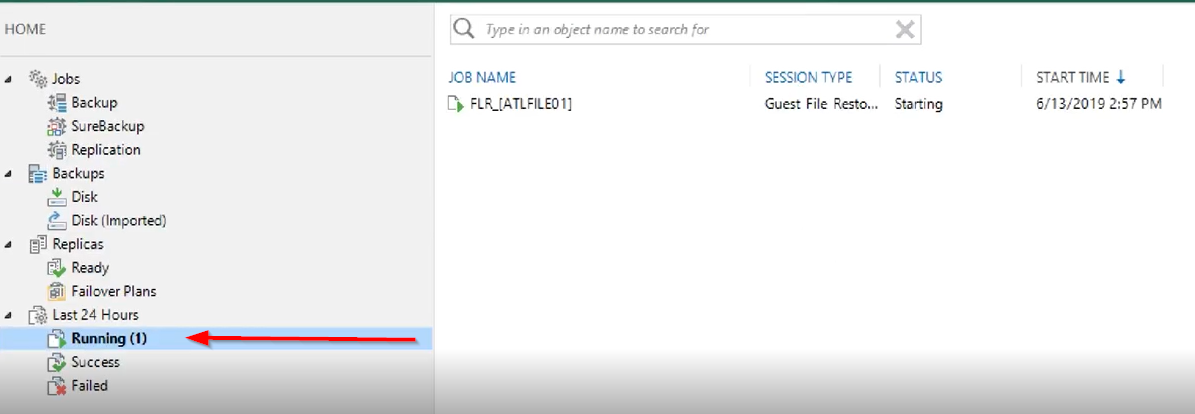
10. Finally, confirm if the file is restored by launching File Explorer, then navigate to the same location you configured for restoration.
You can see below that the folder called en-US is restored successfully.
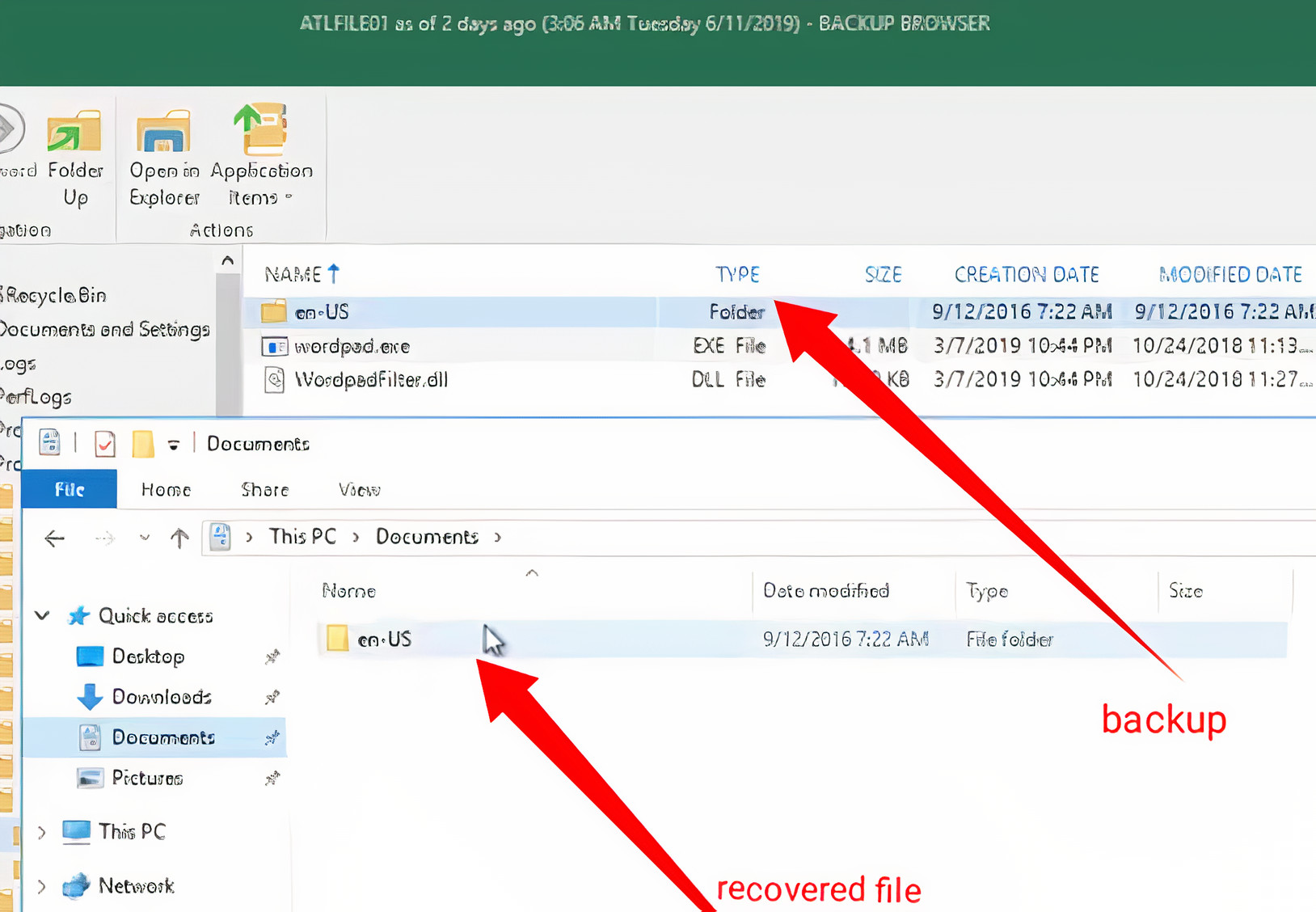
If Veeam has piqued your interest so far, to receive information about veeam products and events, subscribe to Veeam's newsletter. By subscribing, you are agreeing to have your personal information managed according to the terms of Veeam's Privacy Policy, but you can unsubscribe at any time.
Conclusion
Ready to take advantage of everything that VMware has to offer, be sure to check out VMware vSphere and take your virtualization to the next level!
In this tutorial, you've learned how to successfully back up a virtual machine, and restore file-level data with Veeam. You've also implemented a Veeam solution to prevent the slightest chance of data loss.
Now would you turn to Veeam Backup and Replication for the safe-keeping of your cloud data?
Source: https://adamtheautomator.com/veeam-backup/
0 Response to "Reinstalled Veeam How to Continue Incremental Backups"
Post a Comment